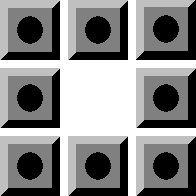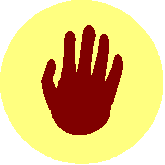


Physical Intelligence



Also called "Kinaesthetic Intelligence". The ability to use one's body in highly differentiated and skilled ways, for both goal-oriented and expressive purposes. The capacity to exercise fine and gross motor control of one's body.
HOBBIES
Walking
Running
Cycling
Sport, keeping fit & gymnastics
Dancing
Swimming
Golf
Drama
D-I-Y & practical activities
Crafts (sewing, knitting, crochet, embroidery, marquetry, model-making, woodturning, toy-making, origami)
Juggling
CHARACTERISTICS
Active
Balance, grace and poise
Dextrous
Well co-ordinated
Solves problems by experiment
Tends to touch and fiddle with things
Uses hands when talking
May be an outdoor person
May find it difficult to sit still
May enjoy daredevil fairground rides and similar experiences
CAREERS
Professional sport
Sports coaching & therapy
Personal fitness trainer
Leisure industry
Physiotherapy
Massage
Dancing
Choreography
Entertainment
Circus performer
Travel
Practical crafts
Carpenter
Sculptor
Manufacturing
Agriculture (especially if also naturalist)
Theatre
Building & construction
Forestry (especially if also naturalist)
Transport
Touch-typing
Archaeology (if also naturalist)
Engineering (if also logical)
DEVELOPING PHYSICAL INTELLIGENCE
Engage in sports and physical activities.
Practice mime.
Use your non-dominant hand (perhaps for an hour a day).
Notice the connection between your own body language and your feelings.
Learn how to actively use your own body language to influence others.
Take up a practical hobby (see list on left)
EXAMPLES
Marcel Marceau (mime artist)
Charlie Chaplin
Michael Crawford (actor)
Michael Owen (footballer)
BRAIN STUFF
The part of the brain that controls the movement process is a strip across the top of the head roughly underneath where one would wear a set of headphones. The left-side strip governs movement of the body's right side and vice versa.
Surgical separation of the corpus callosum (the bundle of nerve fibres which enables cross-brain communication) can leave an individual literally "in two minds", creating co-ordination difficulties.
The brain's awareness and regulation of the position and status of the body's constituent parts is known as proprioception.
In (blind) Braille readers, the area of the brain that controls the reading finger becomes more active and enlarged.
STUDY TIPS
Practice a skill.
Learn and use the "Body pegs" memory system.
Learn the sign-language alphabet and use this as a mnemonic aid.
SEE: "Let's get physical"
